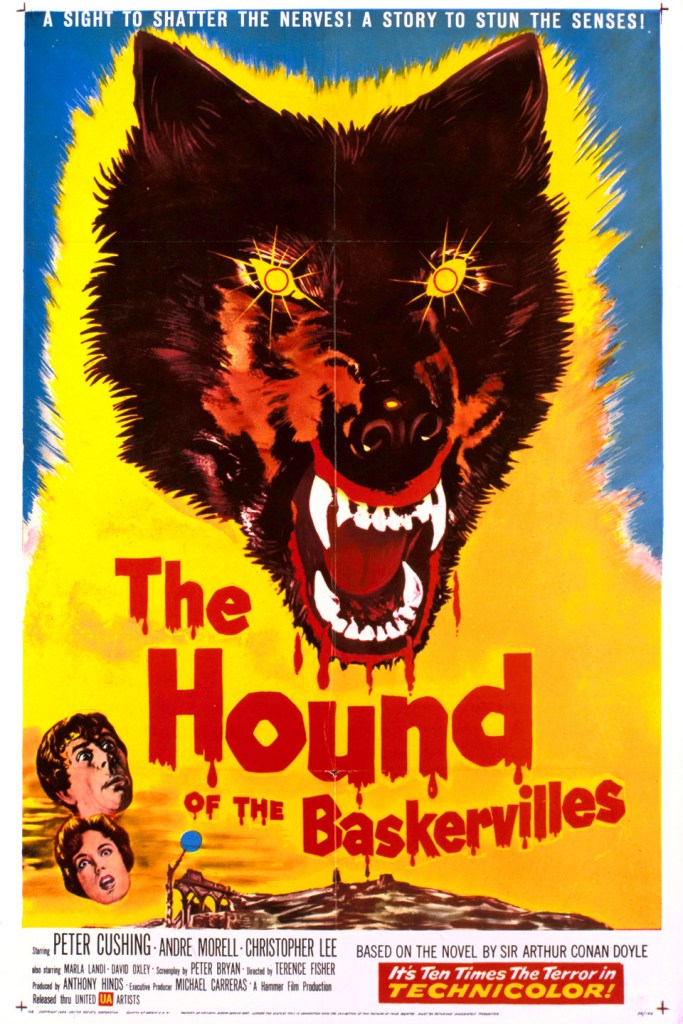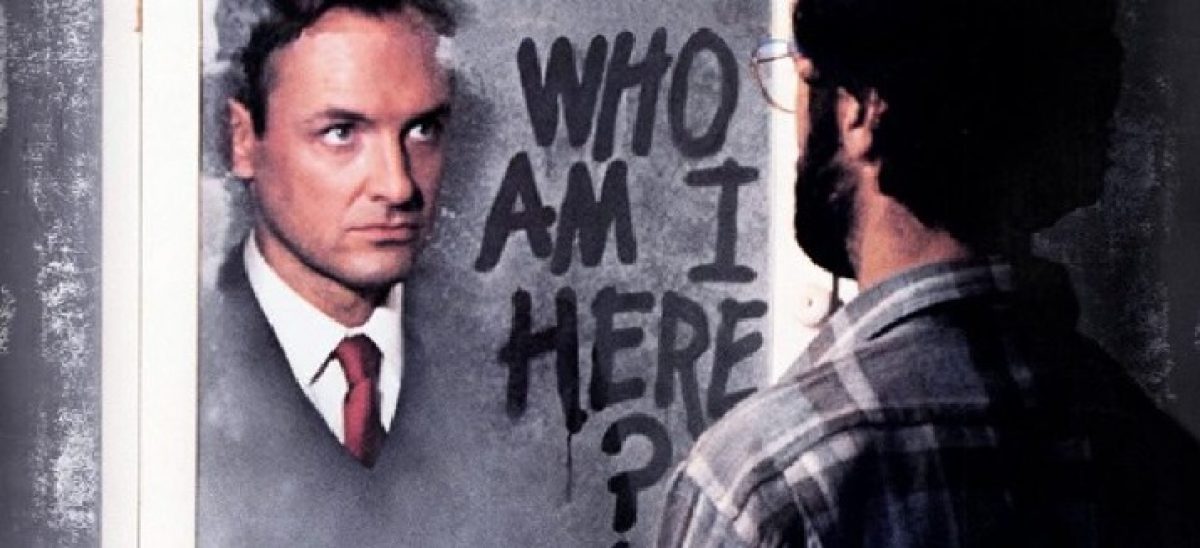
Directed by Terence Fisher [Other horror films: Three’s Company (1953, episodes ‘The Surgeon’ & ‘ Take a Number’), The Curse of Frankenstein (1957), Dracula (1958), The Revenge of Frankenstein (1958), The Man Who Could Cheat Death (1959), The Mummy (1959), The Stranglers of Bombay (1959), The Brides of Dracula (1960), The Two Faces of Dr. Jekyll (1960), The Curse of the Werewolf (1961), The Phantom of the Opera (1962), The Horror of It All (1964), The Gorgon (1964), The Earth Dies Screaming (1964), Dracula: Prince of Darkness (1966), Island of Terror (1966), Frankenstein Created Woman (1967), Night of the Big Heat (1967), The Devil Rides Out (1968), Frankenstein Must Be Destroyed (1969), Frankenstein and the Monster from Hell (1974)]
The last time I watched this, I made a small mishap, and by that, I mean I watched it the same day as six other adaptations of this Sherlock Holmes story (specifically, the 1914 and 1929 silent films, the 1937 German version, the classic 1939 movie, the 1972 American television movie and the 1983 British television movie), and didn’t try to review the last three until the end of the day, when they all got mixed up in my mind.
So I had to take a step back, accept defeat, and watch this one again (not that it’s any hardship, believe me) in order to properly get my bearings on the film. And I think that I’ve come to a conclusion in doing so: I prefer the 1939 version just a bit, which, given the cast of this Hammer classic, might surprise some.
Now, it’s still a great film, and if you’re interested in some classic Sherlock Holmes, you’d be hard-pressed to find many films better, but I just don’t think that Christopher Lee was the appropriate actor for Henry Baskerville. Lee is, in many ways, an equal to Cushing – both are actors I enjoy immensely. Those cast in the same role in earlier films (such as Peter Voß and especially Richard Greene) had a younger look, whereas Lee is only slightly younger than Cushing, and doesn’t really look it.
My point is that, for the role of Henry Baskerville, I think a younger actor works better. I certainly have no qualms with Lee, and I do rather enjoy his performance in the film. I just don’t think he feels much like the character he’s supposed to be portraying, which is my biggest issue with the film.
Otherwise, the cast is splendid; I loved Basil Rathbone as Holmes, but Peter Cushing is just as good. I think that Rathbone was a bit more fun (for instance, there’s no scene of Holmes trolling Watson while in disguise here), but both are great. André Morell (The Plague of the Zombies, The Mummy’s Shroud, Behemoth the Sea Monster, and The Shadow of the Cat) does decent as Watson. He’s not as bumbling as Nigel Bruce’s, but also not as straight as Fritz Odemar’s rendition.
Marla Landi, playing the daughter of Stapleton (himself played by Ewen Solon) was a nice addition, giving us a character different from what he had before. Ewen Solon (Jack the Ripper) was rather different from what Morton Lowry gave us (when it comes to Stapleton, I think my favorite performance was Fritz Rasp, from the 1929 version). Francis De Wolff (The Two Faces of Dr. Jekyll) was solid as Mortimer, Miles Malleson (The Brides of Dracula and Dead of Night) okay comedic relief as the Bishop, and John Le Mesurier made for a good Barrymore (for some reason, the 1939 version of the character was named Barryman, but every other version has been Barrymore).
The color gives a great sense of life to the moors. I don’t know if they ever look quite as creepy as they did in foreboding black-and-white via the 1939 movie, but they do look decent here. Also, the ending of this one is a bit different from previous adaptations – it still worked quite well, and I commend it for trying something a bit different.
One thing I did find somewhat amusing was the absence of the cane scene. Present in both the 1937 and 1939 movies, Holmes looks at Dr. Mortimer’s cane and deduces a great many things about him, an early way to lend credibility to his craft. That scene is indeed replaced here with something else. Another thing – the attempted murder of Baskerville in London – was changed here to instead come from a tarantula bite.
Otherwise, much is the same – there’s Holmes going to Baskerville Hall after others have left, the sub-plot with the escaped convict remains intact, the missing boot of Baskerville, along with a missing painting. If you’re familiar with the story, you’ll find most aspects here.
Another thing you’ll find, at least in small amounts, is some blood. During the opening origin of the curse, a woman gets stabbed with a curved blade (they have curved. blades.), and later on, we see the aftermath of what looks like a ritualistic killing which leaves little to the imagination. It’s Hammer at it’s finest, and it’s all the better that this story finally got made into a color film.
The Hound of the Baskervilles has always been a solid story, and while I prefer the 1939 version, this movie is no slouch. I’d certainly recommend it to fans of classic cinema, and if you’ve not seen either the 1939 version or this one, do yourself a favor and do so.
8/10


12 thoughts on “The Hound of the Baskervilles (1959)”